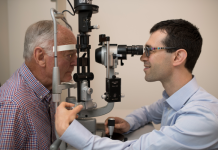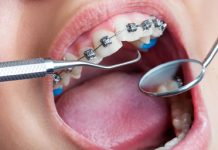Nail fungus, also known as onychomycosis, is a common and stubborn condition that affects millions of people worldwide. It is caused by the overgrowth of fungi in and around the nails, resulting in discoloration, thickening, and crumbling of the affected nails. While nail fungus can be unsightly and embarrassing, it is essential to seek timely treatment to prevent further complications and restore the health of your nails. In this article, we will explore various effective nail fungus treatment available to help you find the most suitable solution for your condition.
Understanding Nail Fungus
Before delving into the treatments, it is crucial to grasp the root cause of nail fungus. Fungi thrive in warm, moist environments, making feet and toenails particularly vulnerable. Common factors contributing to nail fungus include poor foot hygiene, wearing tight-fitting shoes, sharing footwear, walking barefoot in public places like pools and locker rooms, and compromised immune systems.
Symptoms of Nail Fungus
Nail fungus manifests in various ways, and its symptoms can progress gradually over time. Common signs to watch out for include:
- Discoloration: Infected nails often develop yellow, brown, or white patches.
- Thickening: The nails may become abnormally thick and difficult to trim.
- Brittle and crumbly nails: The affected nails may start to break easily and crumble.
- Deformation: Over time, the nails may become misshapen or distorted.
- Foul odor: An unpleasant odor might be noticeable from the infected nails.
- Pain and discomfort: In severe cases, nail fungus can cause pain and discomfort.
Treatment Options
Treating nail fungus can be a challenging task, but with proper care and persistence, the condition can be effectively managed. Below are some of the most effective treatment options available:
- Topical Antifungal Medications: Over-the-counter and prescription antifungal creams, ointments, and nail lacquers are readily available. These medications are applied directly to the affected nails and surrounding skin. They work by inhibiting the growth of the fungus and gradually clearing the infection. However, success rates vary, and consistent application is essential for lasting results.
- Oral Antifungal Medications: In more severe cases or when topical treatments prove ineffective, oral antifungal medications may be prescribed by a healthcare professional. These medications work from within the body to attack the fungus systemically. Although effective, they may have side effects and should be used under medical supervision, especially for individuals with liver problems.
- Laser Treatment: Laser therapy is a modern and non-invasive option for treating nail fungus. The laser targets the fungus directly without causing damage to the surrounding tissue. This treatment is generally painless and can be highly effective, but it may require multiple sessions to achieve the desired results.
- Photodynamic Therapy (PDT): PDT is a combination treatment that involves applying a photosensitive agent to the affected nails and then exposing them to specific light wavelengths. This process triggers a reaction that helps eliminate the fungus. PDT has shown promise in treating resistant cases of nail fungus.
- Surgical Intervention: In extreme cases where the infection causes severe pain or is unresponsive to other treatments, surgical procedures such as nail removal may be considered. This procedure involves removing the infected nail to allow a new, healthy nail to grow in its place. For more information on nail fungus treatment ,please visit the site.
Preventing Nail Fungus
Prevention is always better than cure. To reduce the risk of nail fungus, consider implementing the following preventive measures:
- Maintain good foot hygiene: Regularly clean and dry your feet, paying particular attention to the spaces between the toes.
- Wear breathable footwear: Opt for shoes made of breathable materials and avoid tight-fitting shoes that trap moisture.
- Protect your feet in public places: Wear flip-flops or sandals in public showers, pools, and locker rooms.
- Avoid sharing footwear: Do not share shoes or socks with others, as this can spread the fungus.
- Trim nails properly: Keep your nails short and trim them straight across to minimize the risk of infection.
Conclusion
Nail fungus is a common condition that requires patience and dedication to treat effectively. Early detection and prompt treatment can prevent the infection from spreading and improve the chances of successful recovery. Whether through topical treatments, oral medications, laser therapy, or surgical intervention, the right approach to treating nail fungus will depend on the severity of the infection and individual circumstances. Remember to consult a healthcare professional to determine the best course of action and follow preventive measures to keep your nails healthy and fungus-free.







